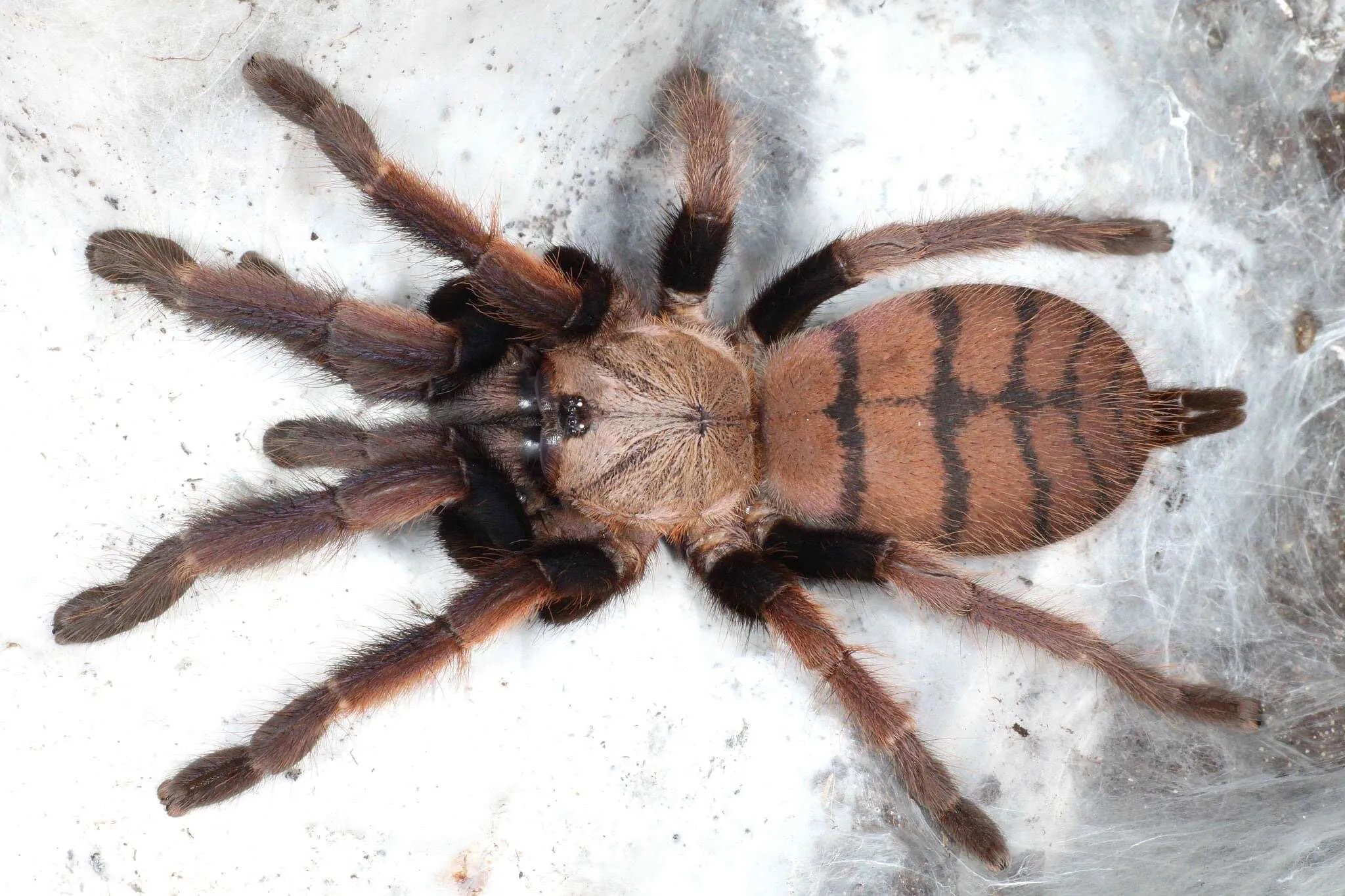Tarantula Bites Are They Dangerous?
Tarantulas, with their imposing size and hairy appearance, often evoke fear and curiosity. While the thought of being bitten by one can be unnerving, it’s essential to understand the reality of tarantula bites. Contrary to popular belief, tarantula bites are generally not life-threatening to humans. The venom of most tarantula species is relatively mild, comparable to a bee sting. However, the severity of a bite can vary depending on several factors, including the species of tarantula, the individual’s sensitivity, and the location of the bite. This article will explore the facts surrounding tarantula bites, providing essential information to help you understand their potential risks and how to respond if bitten. It’s important to approach this topic with accurate information rather than relying on sensationalized myths or exaggerations often found in popular culture, to ensure we are well-informed about these fascinating creatures.
What Happens When a Tarantula Bites?
When a tarantula bites, it uses its fangs, which are typically located near its chelicerae, to inject venom into the victim. The primary purpose of this venom is to subdue prey. In humans, the effects of a tarantula bite can range from mild to moderate. The intensity of the reaction often depends on the species of tarantula and the amount of venom injected. Some bites may result in only a slight pinch, while others can cause more noticeable symptoms. It’s crucial to remember that tarantulas do not bite humans as a default behavior; they typically resort to biting only as a defensive mechanism when they feel threatened or provoked. Handling a tarantula improperly or accidentally startling it can increase the likelihood of a bite. Understanding this defensive behavior is vital for anyone interacting with tarantulas, be it a pet owner or someone working with these arachnids. This will helps us to know how to respond if bitten.
Symptoms of a Tarantula Bite

The symptoms of a tarantula bite can vary, but common reactions include localized pain, redness, and swelling at the bite site. Some individuals may experience itching or a burning sensation. In more severe cases, especially with certain species or in sensitive individuals, more pronounced symptoms can occur. It’s important to monitor the bite site and be aware of any unusual or worsening symptoms. Knowing what to look for can help you determine the severity of the bite and whether medical attention is necessary. While most tarantula bites are not life-threatening, understanding the potential symptoms will helps you ensure you can respond appropriately and seek medical advice when necessary. Also, the symptoms vary from the species.
Pain and Local Reactions
The most immediate and common symptom of a tarantula bite is pain. This pain can range from a mild sting to a more intense discomfort, depending on the species and individual sensitivity. Along with pain, the bite site will likely exhibit local reactions such as redness and swelling. These local reactions are your body’s immediate response to the venom. The area around the bite may also feel warm to the touch. These reactions are typically localized and diminish within a few hours or days. If these symptoms persist or worsen, it is essential to seek medical attention. Pain and local reactions are a normal part of the body’s response to the venom and the physical trauma of the bite. Monitoring these symptoms is crucial to ensure that the reaction remains localized and does not escalate.
Systemic Reactions
In rare cases, a tarantula bite can trigger systemic reactions, meaning the effects are felt throughout the body. Systemic reactions are more likely to occur in individuals who are allergic or sensitive to the venom. Symptoms of systemic reactions include nausea, vomiting, muscle cramps, and, in extreme cases, difficulty breathing. It is critical to seek immediate medical attention if you experience any systemic symptoms after being bitten by a tarantula. Systemic reactions are not typical, but the potential for them underscores the importance of understanding the risks associated with tarantula bites. Recognizing these symptoms and responding promptly can prevent more severe complications. Being aware of the possibility of systemic reactions helps to ensures that you are prepared for any eventuality, especially if you have allergies or sensitivities.
First Aid for Tarantula Bites

If you are bitten by a tarantula, taking immediate first aid steps is crucial. The primary goal is to minimize the effects of the venom and prevent complications. Although most tarantula bites are not highly dangerous, proper first aid can help manage the symptoms. Understanding the initial steps to take, such as cleaning the wound and monitoring your condition, can make a significant difference. The following steps will help you to be ready and calm when dealing with a tarantula bite. Always remember that quick action will lead to a better recovery.
Cleaning the Wound
The first step in treating a tarantula bite is to clean the wound thoroughly. Use mild soap and water to wash the affected area gently. This helps to remove any remaining venom and reduces the risk of infection. It is essential to clean the bite site carefully and ensure no debris remains. Avoid harsh chemicals or rubbing the area vigorously, as this could cause further irritation. Cleaning the wound is a foundational step in first aid, and doing it correctly helps prevent the entry of any bacteria. Proper cleaning sets the stage for a smoother recovery and prevents secondary infections. Proper cleaning also helps you know where to observe the bite.
Monitoring for Symptoms
After cleaning the wound, carefully monitor the bite site for any changes or worsening symptoms. Keep an eye on the appearance of the area and note any increases in pain, redness, or swelling. Also, pay attention to any systemic symptoms, such as nausea, vomiting, or difficulty breathing. Being vigilant about your body’s response is essential for determining whether you require medical attention. Monitoring for symptoms ensures that you can identify any developing complications promptly. It is crucial to keep a record of any changes and report them to a healthcare professional if necessary. Monitoring is a continuous process; you need to be attentive to your body’s signals to ensure a smooth recovery and identify any adverse effects of the bite.
When to Seek Medical Attention

While most tarantula bites are not life-threatening, certain situations warrant immediate medical attention. Seek medical help if you experience severe pain, persistent swelling, or any systemic symptoms such as difficulty breathing, nausea, or vomiting. Also, if you are unsure about the severity of the bite or are concerned about potential complications, it’s always best to err on the side of caution and seek professional medical advice. Prompt medical attention can provide proper treatment and prevent complications. Do not hesitate to contact a healthcare provider if you have any concerns. Quick medical response is essential in mitigating the effects of the bite and ensuring a full recovery. A healthcare professional can offer the right guidance.
Preventing Tarantula Bites
Preventing tarantula bites is primarily about understanding and respecting the behavior of these arachnids. The best way to avoid being bitten is to handle tarantulas with care and follow safe handling practices. Also, creating a safe environment for tarantulas is very important. By taking precautions, you can significantly reduce the risk of being bitten and ensure safe interactions with these animals. Prevention is the key, and it requires diligence and knowledge. By prioritizing safety, you can avoid the need to deal with a tarantula bite in the first place.
Safe Handling Practices
Safe handling practices are essential for anyone who interacts with tarantulas. Always approach these arachnids with caution and avoid sudden movements. Use tools, such as long tongs or a sturdy container, when handling tarantulas to maintain a safe distance. Never try to handle a tarantula when you are not fully focused or when it appears agitated. Understanding the tarantula’s behavior and body language helps you to anticipate when it might feel threatened. By following these practices, you can reduce the risk of being bitten and handle tarantulas safely. Safe handling is all about respect and understanding for the animal. Make sure you always respect the personal space and behavior of the tarantulas, as they can get defensive very quickly.
Creating a Safe Environment

Creating a safe environment for tarantulas involves several key factors. The enclosure should be secure and escape-proof, and the tarantula should have plenty of space. It is essential to avoid placing the enclosure in high-traffic areas or where it might be exposed to sudden noises or vibrations. Proper environmental controls, such as maintaining the correct temperature and humidity levels, can reduce stress and make the tarantula feel more comfortable. A well-maintained environment minimizes the likelihood of the tarantula feeling threatened and defensive. Providing a secure and comfortable habitat will also contribute to their overall well-being. A safe environment is a happy and peaceful tarantula, which leads to safe and stress-free handling. By creating the right environment, you are helping to ensure that handling and interacting with the tarantulas are safe and enriching experiences.
Debunking Tarantula Bite Myths
There are many misconceptions about tarantula bites, often fueled by fear and sensationalism. One common myth is that all tarantula bites are highly venomous and life-threatening. As discussed, this is generally not the case. Another myth suggests that tarantulas are aggressive and actively seek to bite humans. In reality, tarantulas are typically docile creatures that only bite when they feel threatened. Debunking these myths is crucial for understanding the true nature of tarantula bites and the associated risks. Separating fact from fiction helps to promote a more accurate and informed perception of these arachnids. Correcting misinformation can help you approach tarantulas with a more objective viewpoint, allowing you to handle and care for them responsibly.
It is also a myth that all tarantulas can cause severe allergic reactions. While some people may have allergic reactions, they are not the norm. By clearing up these myths, it’s possible to better understand the real risks. This understanding helps us avoid unnecessary panic and ensures that we respond effectively when someone is bitten. Dispelling myths reduces fear and ensures that the focus remains on factual information. This knowledge encourages the best practices.
Conclusion
In conclusion, while the idea of a tarantula bite might seem intimidating, it is essential to approach the subject with accurate information. Most tarantula bites are not life-threatening, and the symptoms can be managed with proper first aid and, when necessary, medical attention. By understanding the potential risks, practicing safe handling techniques, and debunking common myths, you can interact with tarantulas with greater confidence and responsibility. Remember that prevention is key, and always prioritize the safety of both yourself and the tarantula. Learning and maintaining a level-headed and informed approach is crucial in understanding these fascinating creatures.
